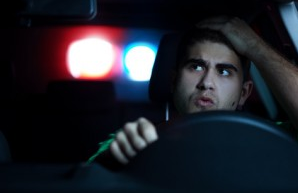By Staff Reports
(DGIwire)– As the weather grows warmer and days grow longer, people look forward to spending summer holidays with their family and friends, often accompanied by alcoholic beverages. After all, what’s more American than a Budweiser on the Fourth of July? Unfortunately, many people take the celebration too far, and instead of assigning a designated driver to take them home, they themselves get behind the wheel.
Though drunk driving is a yearlong epidemic, the number of fatalities swells during summers and holidays, according to data published by the National Highway Traffic Safety Administration (NHTSA). In a 2006 survey, the NHTSA found that, on average, 36 fatalities occurred per day in the U.S. as a result of drunk driving.
The scary thing about drunk drivers is that they often cause enormous damage before police officers get to them, as was the case with a 37-year-old woman from Lockport, NY. According to a recent story in The Buffalo News, state police arrested her for driving drunk and drugs after she crashed into a snow-covered field on March 18, 2015. Witnesses told police she had been swerving between lanes and ended up in a field after crossing the center line and driving off the highway.
When police arrived at the scene, according to the News, the Lockport woman refused to give them her driver’s license or car registration, and even tried to give them a fake name. After a quick computer check, troopers discovered that her license had been suspended. Upon searching her vehicle, troopers also found 36 narcotic pills out of their original container and mixed in a pillbox with prescribed medication.
“There is no ‘typical’ drunk driver,” says Ronald A. Woessner, CEO of COPsync, Inc. “Drunk drivers have a tendency to be errant, disobedient and hard to control, which can leave officers in a difficult position when detaining them and handling anything else they might find.”
Woessner is familiar with this nationwide and growing problem. Based in Dallas, TX, COPsync operates a real-time, in-car information sharing, communication, and data interoperability network for law enforcement agencies. “It’s not uncommon for officers to stop drivers for one thing, only to discover a whole different issue, such as illegal drugs, unregistered firearms or even unpaid parking tickets,” he adds. “More needs to be done to ensure officers have the support they need, when they need it most.”
Helping to address this issue is is Woessner’s goal. Every patrol officer on the COPsync Network has in-vehicle access to software enabling them to collect, report and share critical data at the point of incident and obtain instant access to various local, state and federal law enforcement databases.
The COPsync system is equipped with many features, one of which is the DWI/DUI Offense Module. Using this module, officers can quickly obtain information about the driver and other vehicle occupants from their drivers’ licenses, and automatically enter this information in required DUI/DWI forms such as vehicle tow sheets, jail forms, court-required complaints, offense reports and government-mandated reports. This enables officers to complete the required forms (sometimes as many as a dozen) in minutes—rather than hours. This gets them back on the road sooner to interdict crime and criminal activity, rather than completing paperwork.
Perhaps it will only be a matter of time before every cop going after drivers under the influence will feel supported—secure in the knowledge that a whole network of backup is simply a click away.

